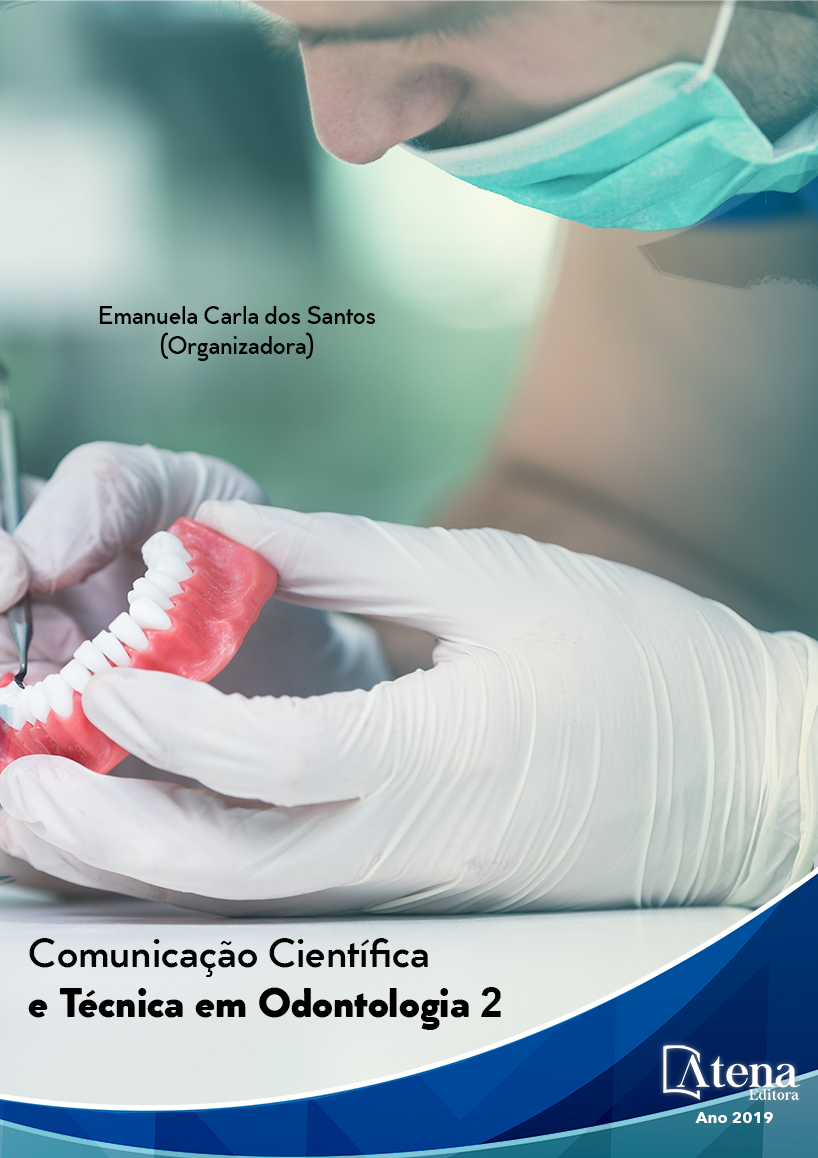
ÍNDICES DE REMANESCENTE ADESIVO E DE RUGOSIDADE DE SUPERFÍCIE APÓS DESCOLAGEM DE BRAQUETES: COMPARAÇÃO ENTRE O USO DE PISTOLA E ALICATE
Este trabalho teve como objetivo
analisar os índices de remanescente adesivo
(IRA) e de rugosidade de superfície (IRS)
após a descolagem de bráquetes com o uso
de dois diferentes métodos de descolagem
de bráquetes metálicos, estabelecendo-se
a correlação entre eles. Foram utilizados 20
pré-molares superiores e inferiores hígidos,
cujas faces vestibulares foram condicionadas
com ácido fosfórico a 37% para colagem
de bráquetes metálicos para pré-molares
(Referência 75.02.008, Morelli - Sorocaba)
com resina (Orthocem). Após 24 horas, foram
divididos em dois grupos (n=10), sendo que um
dos grupos, os bráquetes foram removidos com
alicate para remoção de bráquetes (ICE) e no
outro foram removidos com pistola Priscila 346P
(Zatty). Por meio de inspeção visual em lupa
estereomicroscópica com aumento de 40 vezes,
avaliou-se o IRA e o IRS, utilizando-se escores.
Foi avaliado o percentual de escores para
cada tipo de método de descolagem. A análise
de correlação de Spearman mostrou que não
houve correlação significativa entre os índices
de remanescente adesivo e de rugosidade da
superfície (p=0,9729). As medianas do IRA para
alicate e pistola mostraram que mais de 90% da
resina permaneceu sobre o esmalte. A mediana
do IRS para pistola e alicate mostrou que houve a
presença de finos arranhões sobre a superfície.
O teste de Mann-Whitney mostrou que não
houve diferença significativa entre os métodos
de descolagem de bráquetes (p>0,05) quanto
aos Índices de Remanescente Adesivo (IRA)
e de Rugosidade da Superfície (IRS). Podese
concluir que não houve dano significativo
ao esmalte dental em decorrência de ambos
métodos de descolagem, embora a resina
permaneça no substrato, independentemente
do método de descolagem.
ÍNDICES DE REMANESCENTE ADESIVO E DE RUGOSIDADE DE SUPERFÍCIE APÓS DESCOLAGEM DE BRAQUETES: COMPARAÇÃO ENTRE O USO DE PISTOLA E ALICATE
-
DOI: 10.22533/at.ed.26519290310
-
Palavras-chave: Descolagem de bráquetes. Fratura do esmalte
-
Keywords: Bracket debond. Enamel fracture.
-
Abstract:
The aim of this study was to
analyze the adhesive remnant index (ARI) and
surface roughness index (IRS) after bracket
detachment following two different metal
bracket detachment methods, establishing a
correlation between them. Twenty upper and
lower premolars were used, whose buccal
surfaces received conditioning with phosphoric
acid to receive the bonding of metal clasps
for premolars (Reference 75.02.008, Morelli
- Sorocaba) with resin (Orthocem). After 24
hours, they were assigned into two groups (n
= 10). In one of the groups, the brackets were
debonded using pliers bracket removal (ICE)
and the group debonded using Priscila 346P
(Zatty) pistol. By means of visual inspection in a stereomicroscopic loupe with a 40x
magnification increase, the ARI and the IRS were evaluated, attributing scores. The
percentage of scores for each type of debonding method was evaluated. There was no
significant correlation between indices of adhesive remnants and surface roughness (p
= 0.9729). The median ARI for pistol showed that more than 90% of the resin remained
on the tooth, for the pliers, it was observed that the highest percentage remained with
the adhesive on the tooth; and the IRS median for pistol and pliers showed that there
were thin scratches on the surface. The Mann-Whitney test showed that there was
no significant difference between bracket debonding (p> 0.05) for Adhesive Remnant
Index (ARI) and Surface Roughness (IRS). It was concluded that there was no
significant damage caused to tooth enamel by both methods of debonding, with no
differences between them, although the resin remains on the substrate, regardless of
the debonding method.
-
Número de páginas: 15
- Roberta Tarkany Basting
- KARINA FIGUEIRA GOMES DOS SANTOS


